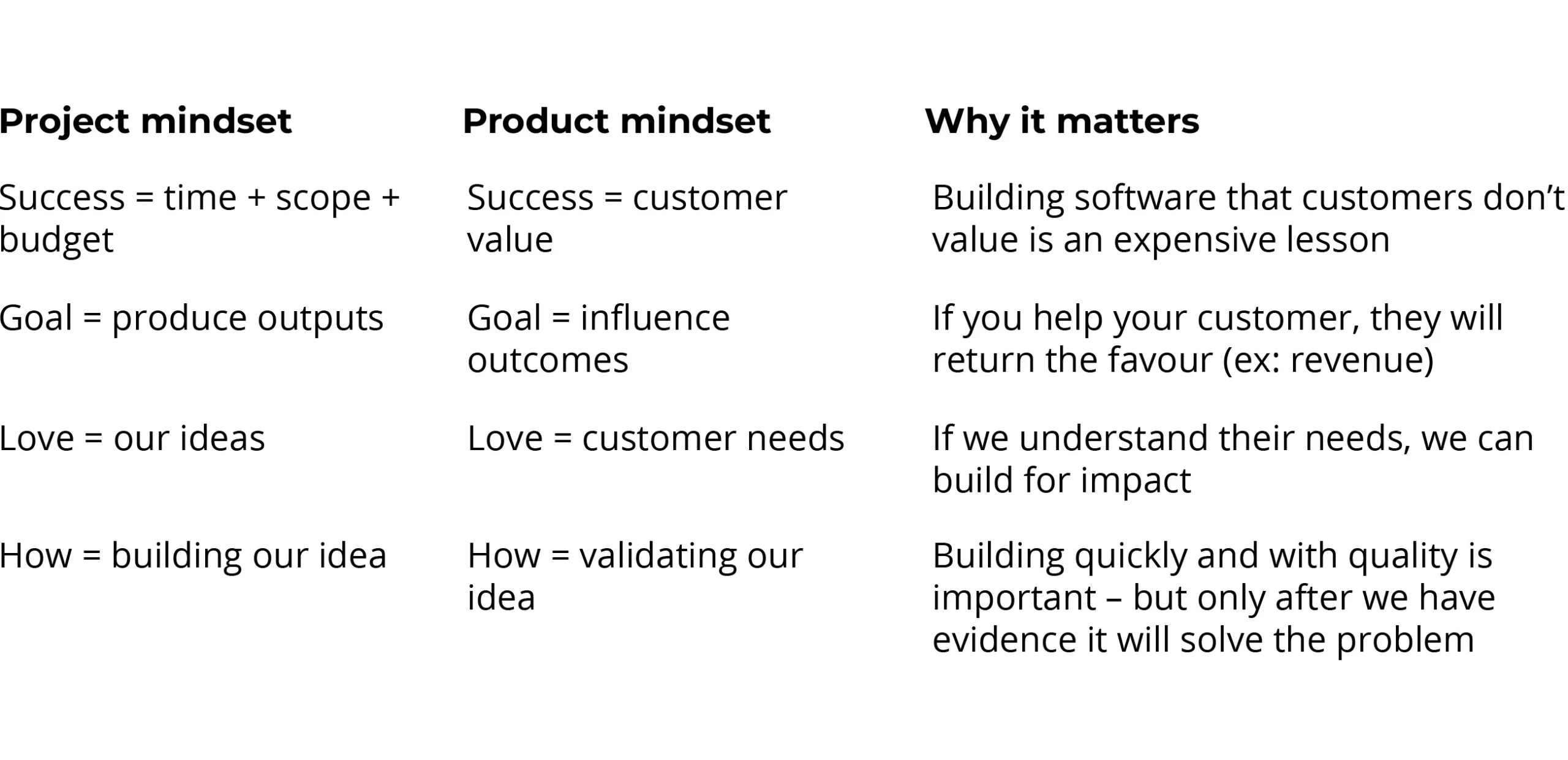
Length
2 min read
What Agile is not.
The past two decades has ushered in the age of ‘Agile’ software development, which has spread like wildfire through organisations large and small. But is it all we cracked it up to be? Are we creating better products because of it, or are we just improving time to market?
Agile came about as the antidote to wasteful and slow waterfall style project management. The Agile Manifesto, published in 2001, states Agile Principle #1 as “Our highest priority is to satisfy the customer through early and continuous delivery of valuable software.”
But, in 2024, you’ll be hard-pressed to find ‘valuable software’ reflected in the performance indicators of Product Managers and Product Owners, or anyone in the Product Trio for that matter. It’s difficult to measure value if you don’t know what customers need. Instead, success is typically measured against how well the team is meeting internal expectations of timelines, scope and budget. Output over outcome. A project, not a product.
Twenty years after the publication of the Agile Manifesto, we are still en masse managing projects rather than products, albeit in smaller chunks at a time. Business cultures haven’t changed along with the Agile revolution, it seems.
Ditch your ideas and focus on customer needs instead.
Many organisations that adopt Agile, focus on processes and rituals, to the point where they can become mere theatre. But when projects reach their end points, organisations are left scrambling to keep momentum going. This is because they haven’t unleashed the true power of Agile: its product mindset.
Unlike projects, products are ongoing, evolving entities. They are not bound by a strict timeline; instead, they adapt and grow with the market, customer feedback, and emerging trends.
A product mindset means viewing your offerings as living, breathing solutions that constantly improve and innovate.
Success, then, is defined as a product that improves the lives of its users by helping them getting a job done. This is the only definition of done that truly matters if you claim to do Agile software development.

“The difference between a project and product mindset.” Lean TECHniques
You can’t be Agile if you don’t know your audience.
Many designers have mixed feelings about working in an Agile ‘cookie cutter’ environment. But Human-Centred Design and Agile – if implemented correctly – can really be a match made in heaven.
By putting the end-user at the forefront of the development process, Agile teams can ensure that every sprint, iteration, and release is not just a technical milestone, but a meaningful solution to real user needs. The result is a more impactful digital experience.
At Symplicit, we don’t just preach the product mindset; we live it. Our human-centred design approach, called AgileUX, is rooted in understanding your audience: not only their pain points in using your software, but also their broader context, their hopes and dreams, their unmet needs.
We don’t just deliver projects; we cultivate products that become integral parts of your customers’ lives. Our team is passionate about driving long-term success for your business.
